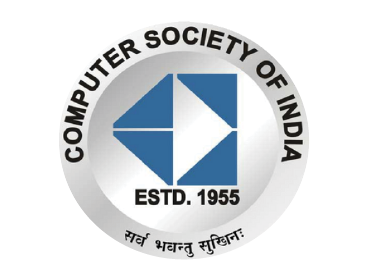



Faculty Mentor:
Mr. Sanjive Saxena
Student Name:
Radhika Gupta (MCA –II)
Palak Singla (MCA –II)
1. ABSTRACT
Pixie Dust is a magical golden glitter powder which grants the ability to fly. It also has the ability to reunite anyone with their true love. When it is poured over the person, it sparkles and finds its way to one's true love. According to Tinkerbell, pixie dust does not lie and fairies use pixie dust to help people frequently. But the fairies are quite proprietary about pixie dust.
There are two types of pixie dust. (i) The movies: "pixie dust" flows from the heart of the Pixie Dust Tree. (ii) The books: following the Pixie Dust Tree's destruction, "fairy dust" is created by grinding the molten features of Mother Dove. In easy words, Pixie Dust is nothing more than a golden, sparkling powder and this dust comes from special blue pixie dust which replenishes the supply. A golden color enables pixies to fly and blue dust is shown to be a powerful augment and rejuvenator.
However, there are other colors of pixie dust created in the movies, such as green, pink, orange, teal, yellow, and purple, each granting a fairy a talent or augmenting one. If a fairy's wings get wet, pixie dust cannot fill up them until they are dry.
2. Abilities

Table 1: Abilities and Talents
3. Supposed Pixie Dust Abilities (Rumored but Never seen in use)

4. Introduction
Pixie Dust is just an open source for all the users which helps them to improve the user experience of working with data in Jupiter notebooks. The users who have no access to configuration files can also use it when a notebook is hosted on the cloud.
Pixie Dust is a new tool in the market for Python or Scala notebooks, which helps a developer to enlarge their business with the logic so that customers can grab it easily and start consuming as well.
Pixie Dust uses Python display libraries like matplotlib, which simplifies its work, but it too works on effectively in Scala notebooks too. We can easily generate charts in Scala notebooks. Pixie Dust also brings robust Python visualization options to your Scala notebooks.
5. Why do we need it?
All the notebooks are a powerful and beneficial tool for fast and flexible data analysis. But the learning curve is not permanent. The curve is always risen fast and fall fast.
Python data science notebooks were first popularized in academia, and there were some formalities to work through before you can get to your analysis. For example, in a Python interactive notebook, a mundane task like creating a simple chart or saving data into a persistence repository requires expertness of complex code.
Once the notebook is created which provides us with great ideas about data, so it’s incredibly difficult to share with users who don’t want such hard code and collaboration of the notebooks.
6. IBM's "Pixie Dust" Enhancement to Quadruple Disk Drive Density
Antiferromagnetically-coupled structures are researched, developed and manufactured by IBM and there is a “spintronic” interaction between the materials' electrons and magnetic fields. In 1990, IBM scientists discovered that a thin layer of ruthenium atoms created the strongest anti-parallel coupling between adjacent ferromagnetic layers of any nonmagnetic spacer-layer element. In 1997, the structure was used in the first giant magneto resistive read element for disk drives. GMR heads are now used in virtually all disk drives.
The key to IBM's new data storage breakthrough is a three-atom-thick layer of the element ruthenium, a precious metal similar to platinum, sandwiched between two magnetic layers in which only a few atoms of the ruthenium layer are informally referred as "pixie dust."

Figure 2: Spintronic Interaction
The new multilayer coating is expected to permit hard disk drives to store 100 billion bits of data per square inch of disk area by 2003.
With AFC media, 100-gigabit data density could allow the following capacities within 2 years:
* Desktop drives -- 400 GB or the information in 400,000 books;
* Notebook drives -- 200 GB which are equivalent to 42 DVDs or more than 300 CDs;
* IBM's one-inch Microdrive -- 6 GB or 13 hours of MPEG-4 compressed digital video for handheld devices.
7. Features
7.1 Package Manager – Lets you install Apache Spark™ packages inside a Python notebook. This is a gap that prevents developers from using a large number of Spark package add-ons that you can’t do today on hosted Jupyter notebooks. You can install the packages/plain jars in your Notebook Python kernel without the need to modify a configuration file
7.2 Visualizations - One single API called display() lets you visualize your Spark object in different ways viz, table, charts, maps, etc. This module is designed to be extensible and to provide an API that lets anyone easily contribute a new visualization plugin

Figure 4: Visualizations
7.3 Export – It shares Easily download data to .csv, html, json, etc., locally on your laptop or into a variety of back-end data sources, like Cloudant, dashDB, GraphDB, Object Storage.

Figure 5: Export
7.4 Scala Bridge - Use scala directly in your Python notebook. Variables are automatically transferred from Python to Scala or vice-versa.

Figure 6: Scala Bridge
7.5 Extensibility - Create your own visualizations using the pixie dust APIs. If you know HTML and CSS, you can write & deliver amazing graphics without even forcing notebook users to type one line of code

Figure 7: Extensibility
7.6 Embed Applications – It encapsulates your analytics into compelling user interfaces better suited for line-of-business users:
Figure 8: Embedded Applications
8. RSA to be sold on magic pixie dust qualities of blockchain
Ramzan said, blockchain is a "heavy duty model" designed to address problems with a lack of trust, but often the solution has a number of trust assumptions built in, i.e., in the case of tracking an object, the process for assigning identifiers and adding the identifiers to the blockchain need to be trusted.
But the CTO told ZDNet that blockchain is starting to be regarded as magic.
It's become this magical pixie dust, where people think they can solve all problems, and maybe they can use it to address a certain set of problems, but just because they can and doesn't mean they should.
9. References
1.https://developer.ibm.com/code/open/projects
/pixiedust/
2. https://disney.wikia.com/wiki/Pixie_Dust
3. https://www.zdnet.com/article/rsa-yet-
to-be-sold-on-magic-pixie-dust-qualities-of-blockchain/